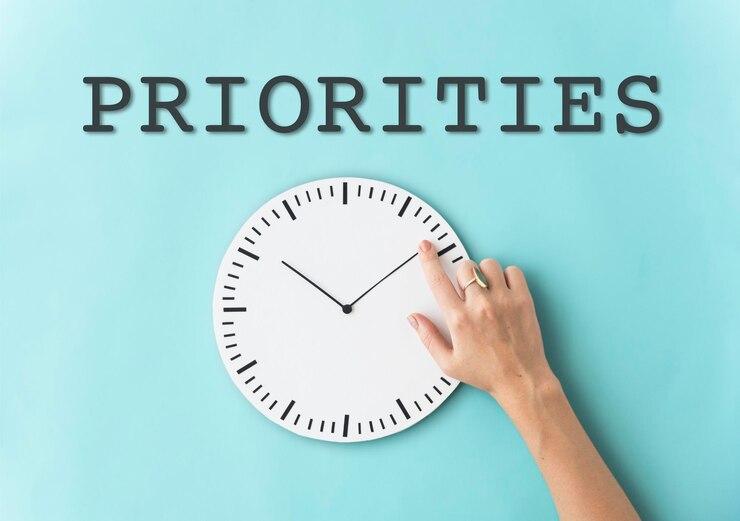



Embarking on the journey to homeownership is a significant and exciting endeavor, representing a crucial milestone in many people's lives. However, one of the primary challenges that prospective homebuyers face is the need to save for a substantial down payment. Achieving this financial goal demands more than just setting money aside; it necessitates strategic planning, disciplined financial management, and a thoughtful approach to investment options. In this article, we will explore various tips and strategies designed to empower you in accumulating the necessary funds and turning your dream of homeownership into a tangible reality.
Successfully saving for a home involves a multifaceted approach, considering factors such as budgeting, lifestyle adjustments, and prudent financial choices. By understanding the intricacies of these components, you can navigate the path to homeownership with confidence and purpose. Whether you're a first-time homebuyer or looking to upgrade to your dream home, the insights provided in this guide will serve as a valuable resource to help you make informed decisions and achieve your homeownership goals.
As we delve into the following sections, you'll gain a deeper understanding of the 50- 30- 20 rule, lifestyle adjustments that can expedite your savings journey, and the importance of monetizing other assets. Additionally, we'll explore the significance of avoiding high-interest debt and choosing the right investment vehicles to balance risk and return. Together, these strategies will provide you with a comprehensive roadmap to navigate the complexities of saving for a down payment and making your dream of homeownership a reality.
Understanding the Importance of a Down Payment

A down payment plays a pivotal role in the process of acquiring a home and represents the initial financial commitment made by prospective homeowners. Typically expressed as a percentage of the total cost of the home, the down payment serves as a crucial factor influencing mortgage terms and interest rates. This upfront payment is a tangible demonstration of the buyer's financial responsibility and commitment to the property purchase. The significance of the down payment extends beyond a mere financial transaction; it is a key determinant that can impact the overall affordability and viability of the home-buying journey.
In the context of mortgage agreements, a higher down payment often translates to more favorable loan terms, including lower interest rates and reduced monthly payments. Lenders view a substantial down payment as a positive indicator of the borrower's financial stability and commitment, thereby mitigating the perceived risk associated with the loan. This, in turn, can lead to a smoother and more advantageous home-buying process.
Beyond its immediate impact on mortgage terms, a substantial down payment also lays the groundwork for a more secure and manageable financial future. By investing a significant amount upfront, homeowners can potentially reduce the loan amount, resulting in lower long-term interest payments. This financial prudence not only fosters a sense of ownership but also contributes to overall financial well-being, offering a buffer against unforeseen circumstances and economic fluctuations.
1. The 50- 30- 20 Rule: Building a Solid Foundation

The 50- 30- 20 budgeting rule serves as a practical and effective framework for individuals aiming to achieve financial stability while working towards saving for a down payment on a home. This rule divides one's take-home pay into three distinct categories: 50 percent for fixed costs, 30 percent for discretionary expenses, and the remaining 20 percent allocated for savings. By embracing this systematic approach, individuals create a well-defined plan that guides them toward accumulating the necessary funds for their down payment.
In the first category, 50 percent of the take-home pay is earmarked for fixed costs, encompassing essential expenditures such as rent or mortgage payments. This allocation ensures a steady commitment to meeting basic living expenses while simultaneously establishing a clear understanding of the financial parameters that impact one's ability to save. The stability provided by this category lays the groundwork for effective financial planning and instills a sense of financial responsibility.
The second category allows 30 percent of the take-home pay for discretionary expenses, which may include activities like dining out or entertainment. While these discretionary expenses add enjoyment and variety to life, adhering to the 30 percent limit fosters financial discipline. Recognizing the need to control non-essential spending becomes crucial in the context of saving for a down payment. This aspect of the 50- 30- 20 rule encourages individuals to evaluate and prioritize their discretionary spending, making informed decisions that align with their overarching goal of homeownership.
The remaining 20 percent dedicated to savings is the cornerstone of this budgeting strategy. This portion serves as the financial engine driving progress toward the down payment goal. Although implementing the 50- 30- 20 rule may necessitate sacrifices, such as cutting non-essential expenses, the long-term benefits of achieving homeownership often far exceed the temporary adjustments made to one's lifestyle. The commitment to saving a significant portion of income systematically positions individuals on a path to financial success, empowering them to realize their dream of owning a home.
2. Lifestyle Adjustments: Temporary Sacrifices for Long-Term Gains

Making significant lifestyle adjustments is a proactive strategy for those seeking to expedite their journey toward homeownership. One impactful step involves considering a temporary relocation to a smaller, more affordable apartment. This move not only reduces immediate living expenses but also frees up additional funds that can be channeled toward the crucial goal of saving for a down payment. While the adjustment may be temporary, the financial benefits can have a lasting impact, propelling individuals closer to their dream of owning a home.
In conjunction with this, exploring alternative income sources becomes a key aspect of lifestyle adjustments. Supplementing regular employment income with side hustles or freelance opportunities provides an additional financial boost specifically dedicated to the homeownership fund. This diversified income stream not only accelerates the savings process but also enhances financial resilience by mitigating dependence on a single source of income. Embracing the entrepreneurial spirit through side endeavors empowers individuals to take control of their financial destiny and actively contribute to the realization of their homeownership aspirations.
Embracing a prudent lifestyle is an integral component of making lifestyle adjustments to save for a down payment. This may involve a defined period—perhaps two to three years—during which individuals consciously cut back on non-essential expenses. From scaling down vacation plans to reducing expenditures on entertainment and memberships, this disciplined approach to spending enables individuals to redirect a significant portion of their income toward their savings goal. While these adjustments may require sacrifices, viewing them as short-term measures for long-term gains imbues the process with a sense of purpose and determination.
3. Monetizing Other Assets: Leveraging Your Financial Resources

- Fixed Deposits (FD): Leveraging Stability for Homeownership
Fixed Deposits (FD) stand as one of the most stable and reliable investment options, making them an attractive resource for homeownership funding. If you have a fixed deposit, exploring the possibility of liquidating or borrowing against it can be a strategic move. By liquidating the FD, you gain access to a lump sum amount that can significantly contribute to your down payment. Alternatively, borrowing against the FD allows you to retain the investment while still accessing funds for your home purchase.
While utilizing fixed deposits for a down payment provides immediate financial support, it's essential to weigh the impact on your overall investment strategy. Consider factors such as the interest rates offered on the FD, any penalties for early withdrawal, and the potential loss of accrued interest. By carefully evaluating these aspects, you can make informed decisions that align with both your short-term homeownership goals and long-term financial objectives.
- Life Insurance Policies: Tapping into Policy Value for Homeownership
Life insurance policies offer a unique avenue for homeownership funding by allowing policyholders to borrow against the cash surrender value. Depending on your policy terms, you may access a substantial percentage of the surrender value, typically ranging between 85-90 percent, as a loan amount. This borrowed amount can be directed towards your down payment, providing a significant financial boost.
However, it's crucial to approach this option with a clear understanding of the associated terms and conditions. Interest rates for loans against life insurance policies usually fall in the range of 9-10 percent, making it imperative to choose a repayment plan that aligns with your financial goals. While tapping into your life insurance policy can offer immediate liquidity, maintaining a comprehensive awareness of the impact on your policy's long-term benefits is essential.
- Employee Benefit Plan (EPF): Balancing Immediate Needs with Long-Term Savings
For those contributing to an Employee Benefit Plan (EPF), the option of making a partial withdrawal presents an immediate source of funds for a down payment. This can be particularly advantageous in urgent situations where quick access to funds is crucial. However, individuals contemplating this option should exercise caution and carefully consider the impact on their long-term retirement savings.
Making a partial withdrawal from your EPF may affect the growth of your retirement corpus, potentially leading to a reduction in the amount available for post-retirement needs. Before opting for this avenue, it's advisable to evaluate the urgency of your homeownership goals against the long-term implications on your retirement savings. Striking a balance between immediate needs and future financial security is paramount when leveraging your EPF for a down payment.
4. Prudent Financial Choices: Avoiding High-Interest Debt
When navigating the journey to homeownership, making prudent financial choices is crucial to securing a stable and sustainable financial future. One cardinal rule is to avoid high-interest debt options, such as credit cards and personal loans when seeking financial support. Although these avenues may offer quick access to funds, the long-term consequences of high-interest debt can pose significant challenges.
Opting for credit cards or personal loans with steep interest rates can lead to an increased long-term debt burden. The accumulation of high-interest debt not only jeopardizes financial freedom but can also delay the realization of homeownership goals. The interest payments on such debts can become a considerable financial strain, diverting funds that could otherwise be allocated to building a down payment. By making informed and cautious choices, individuals can safeguard their financial health and position themselves for a more secure homeownership journey.
5. Choosing the Right Investment Vehicles: Balancing Risk and Return

Accumulating funds for a down payment involves more than just saving; it requires a strategic approach to investing. As individuals embark on this financial journey, exploring the right investment vehicles becomes paramount. The choice between stability and potential high returns depends on one's financial goals and risk tolerance.
Traditional savings accounts and fixed deposits are renowned for their stability and predictability. While they offer lower returns, their conservative nature aligns well with those who prioritize capital preservation. On the other hand, investment vehicles like mutual funds and equities may present higher returns over the long term but come with a higher level of risk.
To strike the right balance between risk and return, consider consulting with a financial advisor. These professionals can assess your unique financial situation, goals, and risk tolerance to recommend an investment strategy tailored to your needs. A diversified investment portfolio, incorporating both stable and growth-oriented assets, can optimize returns while mitigating risk. By aligning your investment choices with your homeownership objectives, you can make informed decisions that propel you toward financial success.
Successfully Navigating the Path to Homeownership

Saving for a home requires careful planning, discipline, and a commitment to financial goals. By following the 50- 30- 20 rule, making lifestyle adjustments, and exploring various asset monetization options, you can build a robust down payment fund. Additionally, avoiding high-interest debt ensures a financially sound approach to homeownership.
Whether you choose traditional savings accounts, fixed deposits, or explore riskier but potentially higher-return options like mutual funds and equity, the key is to align your choices with your financial goals and risk tolerance. With careful planning and dedication, the dream of owning a home can become a reality.
As you begin with this journey, remember that everyone's financial condition is different. Customizing these strategies to fit your specific circumstances will enhance their effectiveness in helping you achieve your homeownership goals. Take proactive steps, stay disciplined, and celebrate each milestone as you progress toward making your dream home a reality.
FAQs
Q1: Why is a down payment important when buying a home?
A1: A down payment influences mortgage terms, and interest rates, and demonstrates financial responsibility, making the home-buying process smoother.
Q2: What is the 50-30- 20 rule, and how does it help in saving for a down payment?
A2: The 50- 30- 20 rule allocates 50 percent of income to fixed costs, 30 percent to discretionary expenses, and 20 percent to savings, providing a structured plan for down payment accumulation.
Q3: How can lifestyle adjustments expedite the savings journey for homeownership?
A3: Lifestyle adjustments, like relocating to a more affordable place and cutting non-essential expenses, free up funds for a down payment, and accelerate the savings journey.
Q4: What are some ways to monetize other assets for a down payment?
A4: Monetizing assets like Fixed Deposits, life insurance policies, and Employee Benefit Plans can provide immediate funds for a down payment.
Q5: Why should one avoid high-interest debt when saving for a home?
A5: Avoiding high-interest debt, such as credit cards and personal loans, prevents increased long-term debt burden, ensuring a smoother path to homeownership.
explore further
Latest from Home Buying Tips
More from Recommendations
Resources
Dwello, for every home buyer, is a way to go from 'I feel' to 'I know', at no extra cost.




